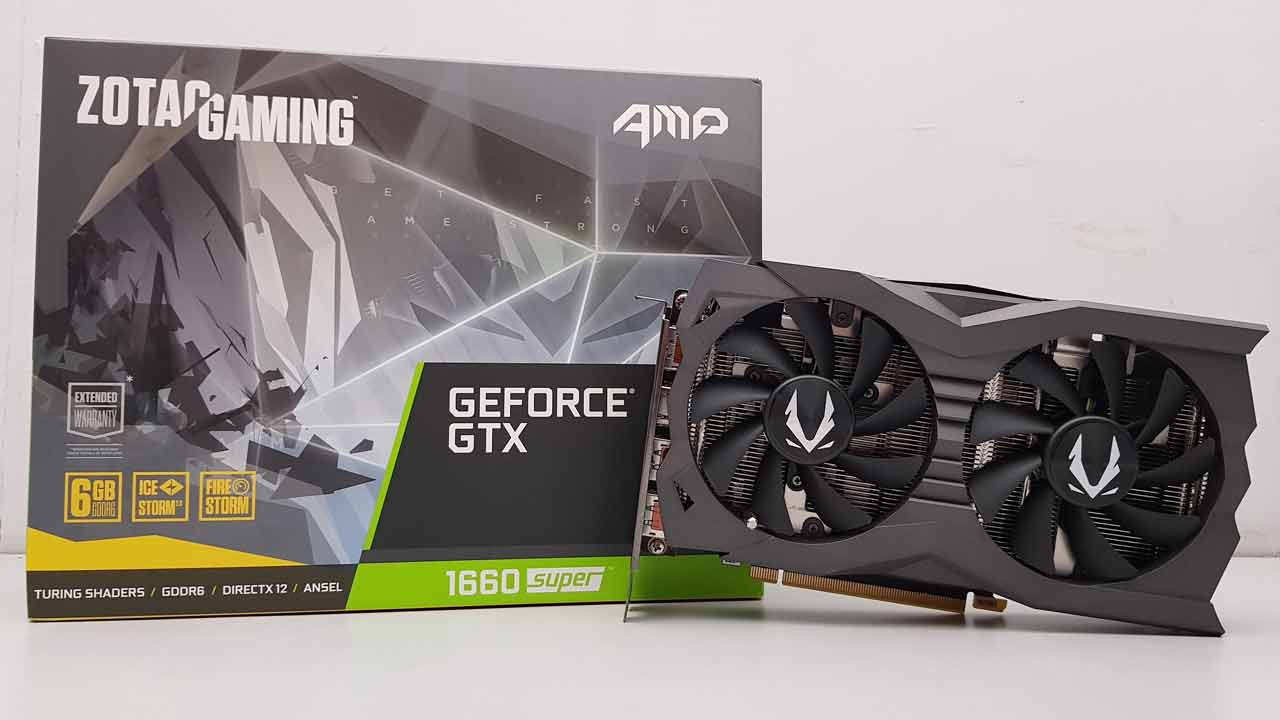
ZOTAC GTX 1660 Super AMP detailed review
The competition in the mid-range has further intensified with NVIDIA launching an additional GPUs today in the form of the NVIDIA GTX 1660 Super and another one, the NVIDIA GTX 1650 Super, will be launched later in November. Both cards are for the GTX 16-series (i.e. the one without hardware accelerated ray-tracing but later received support through a driver update) cards with seemingly moderate bumps in performance. Both cards are AIB-only which means you will not be seeing any NVIDIA Founders Edition graphics cards for these. Today’s review is courtesy of the ZOTAC GTX 1660 Super AMP Edition card which is going to be retailing for Rs.22,590/- in India.
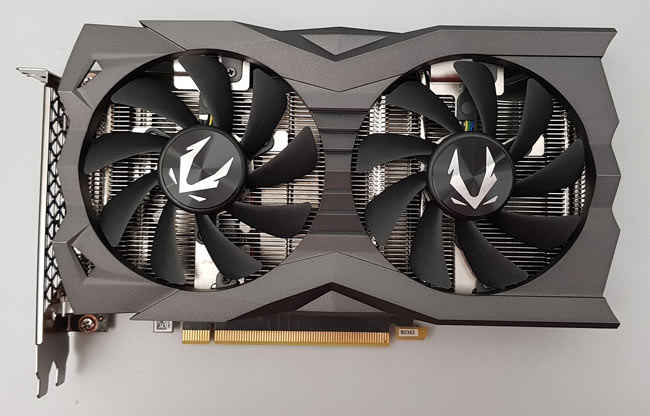
NVIDIA GeForce GTX 1660 Super Specifications
The specifications of the GTX 1660 Super is pretty much the same as the GTX 1660 with just one key difference, the memory has been bumped up from GDDR5 to GDDR6 bringing with it increased bandwidth that will help with gaming at higher resolutions.
| NVIDIA GeForce GTX 1660 Super Specification | ||||
| Card | RTX 2060 FE | GTX 1660 Ti | GTX 1660 Super | GTX 1660 |
| Architecture | Turing | Turing | Turing | Turing |
| GPU | TU106 | TU116-400 | TU116-300 | TU116-300 |
| CUDA Cores | 1920 | 1536 | 1408 | 1408 |
| ROPs | 48 | 48 | 48 | 48 |
| Core Clock | 1365 MHz | 1500 MHz | 1530 MHz | 1530 MHz |
| Boost Clock | 1680 MHz | 1770 MHz | 1785 MHz | 1785 MHz |
| Memory Clock | 14 Gbps | 12 Gbps | 14 Gbps | 8 Gbps |
| Memory Type | GDDR6 | GDDR6 | GDDR6 | GDDR5 |
| Memory Bus Width | 192-bit | 288-bit | 192-bit | 192-bit |
| VRAM | 6 GB | 6 GB | 6 GB | 6 GB |
| Single Precision Perf. | 6.5 TFLOPS | 4.6 TFLOPs | 7.9 TFLOPS | 4.3 TFLOPS |
| “RTX-OPS” | 37T | N/A | N/A | N/A |
| SLI Support | No | No | No | No |
| Transistor Count | 10.8B | 6.6B | 6.6B | 6.6B |
| Manufacturing Process | TSMC 12nm “FFN” | TSMC 12nm “FFN” | TSMC 12nm “FFN” | TSMC 12nm “FFN” |
| TDP | 160W | 120W | 125W | 120W |
| Launch Price | $349 | $279 | $229 | $219 |
The ZOTAC GTX 1660 Super AMP. going by its name, comes with a factory overclock which puts the boost clock at 1845 MHz which is 60 MHz over the boost frequency of the reference specification.
ZOTAC GTX 1660 Super AMP Edition Graphics Card
Since we have no idea what the reference design looks like, we can’t exactly opine on how much of a modification ZOTAC has made to this particular graphics card. However, with AMP Edition cards, ZOTAC does make quite a few changes to the overall design.

The card comes with a backplate that warps around the edges to provide a little extra rigidity. You can see the ZOTAC GAMING logo emblazoned on the top along with the GeForce GTX branding. The card uses an 8-pin power connector despite the reference design only needing 125W which could only mean that the card might pull around 150 W or higher from the PCIe connector. Or it could simply be a design choice to reduce load per cable.

From the bottom you can see the three heatpipes snaking into the finstack which is making contact with the GPU, memory chips and the MOSFETs.
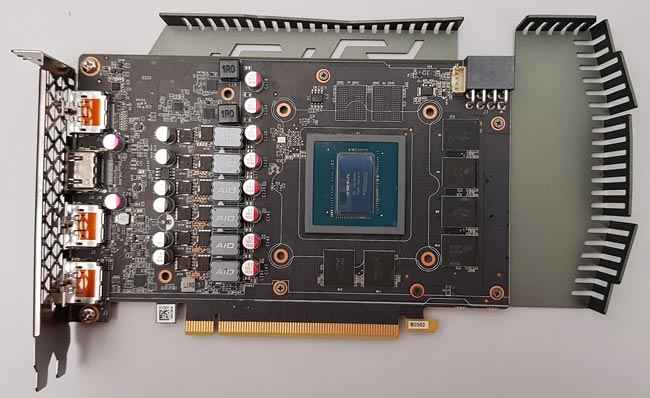
Upon removing the cooler assembly, we can see how much of the card is actually occupied by the PCB. There’s a good inch and a half of excess space on the right side which is used to accommodate the cooler assembly. Also, the connector is quite recessed into the top part. We didn’t face any issues plugging or unplugging the card despite this deep recess. If you are using custom cables then this might end up looking better since the connector will be hidden from view.
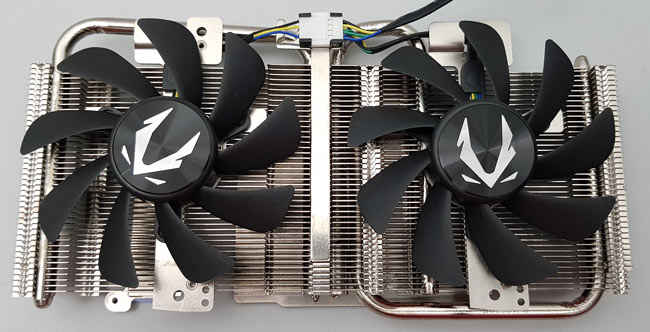
Here we see the cooler assembly in all its glory. Those are two 90 mm fans sitting atop a thick finstack with three heatpipes spreading the heat from the GPU and the VRM.
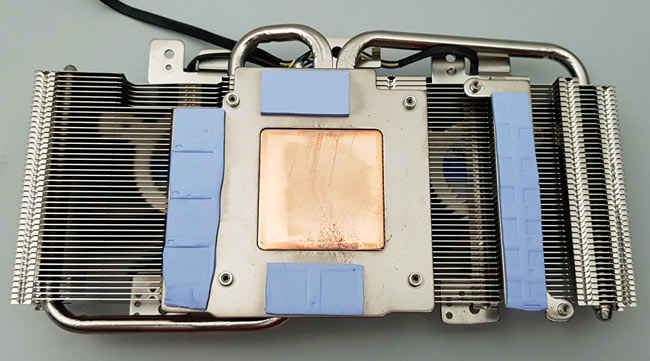
On the bottom of the cooler assembly, you can see that it has a copper base plate to make contact with the GPU and the heatpipes are spread apart across the heatsink.
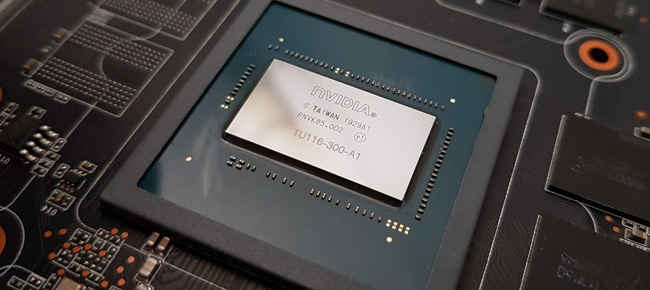
Lastly, there’s the GPU at the heart of the graphcis card which happens to be an NVIDIA Turing TU116-300-A1 surrounded by eight Micron MT61K256M32JE-14 chips for the VRAM.
Performance
Considering that the specifications of the GTX 1660 Super is the same as the GTX 1660 except for the change in the memory configuration, it’ll be interesting to see how it pans out across difference resolutions. We, unfortunately, don’t have the numbers for the vanilla GTX 1660, so we can’t say how much of a difference there will be with respect to that GPU but we do have a GTX 1650 and a 1660 Ti to compare against. Let’s take a look at some gaming benchmarks.
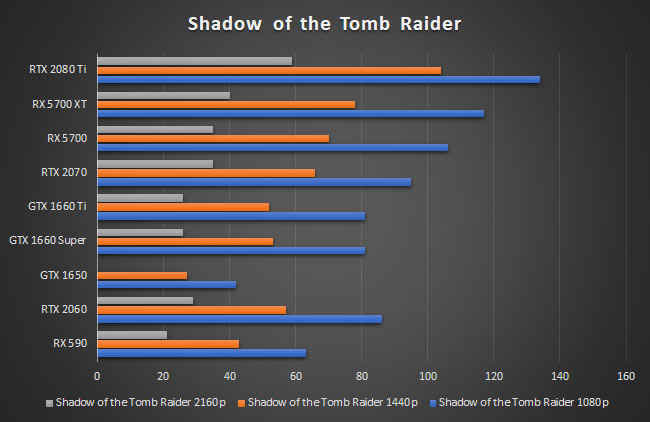


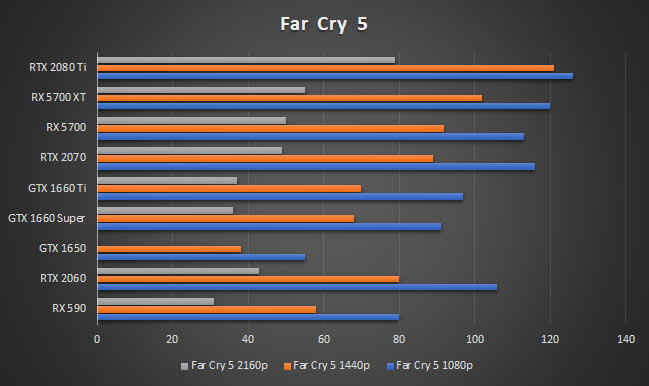
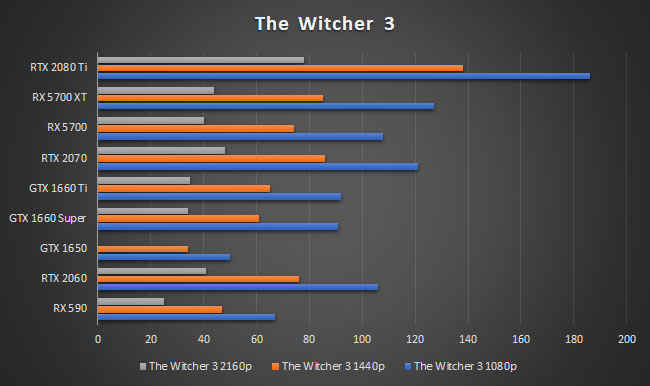
The 1650 is left in the lurch by the new GTX 1660 Super but what’s more interesting is to see that the GTX 1660 Super equals the GTX 1660 Ti in most of the benchmarks. The 1660 Ti certainly has a slight advantage of say 3-5 FPS in some titles but that’s not enough to justify the price difference. It seems almost as if there’s no need to get the 1660 Ti for most of the games that we’ve tested.
[ad_2]
Source link






